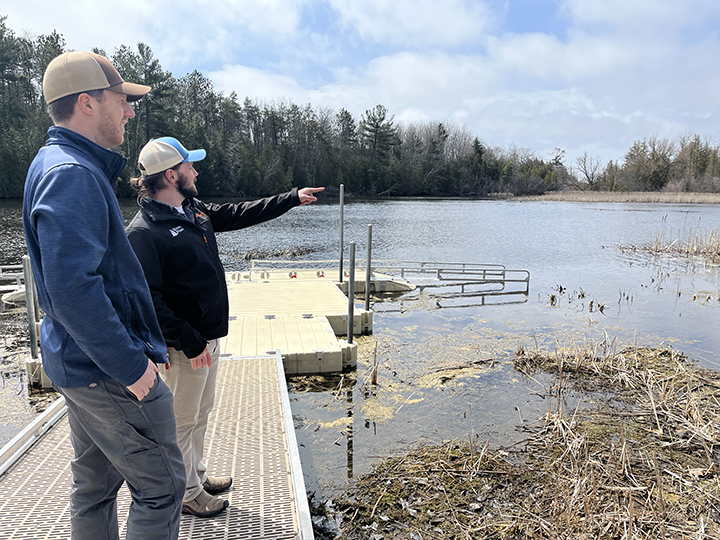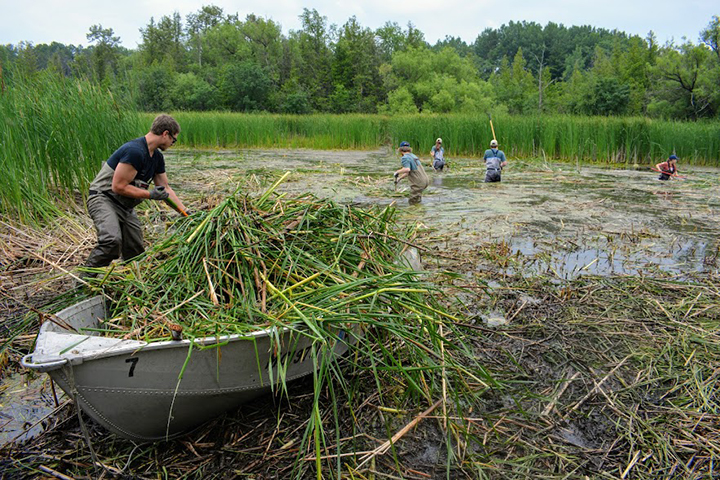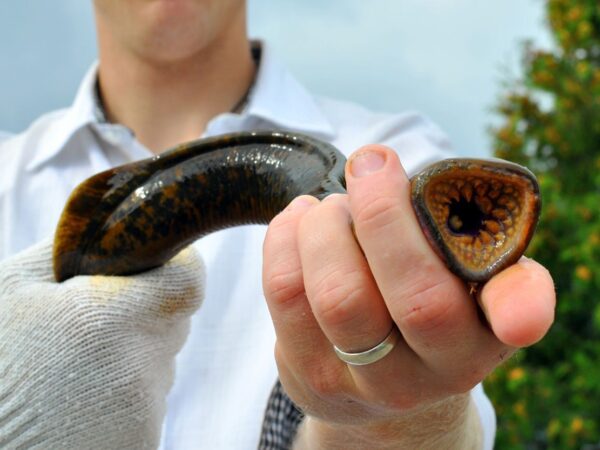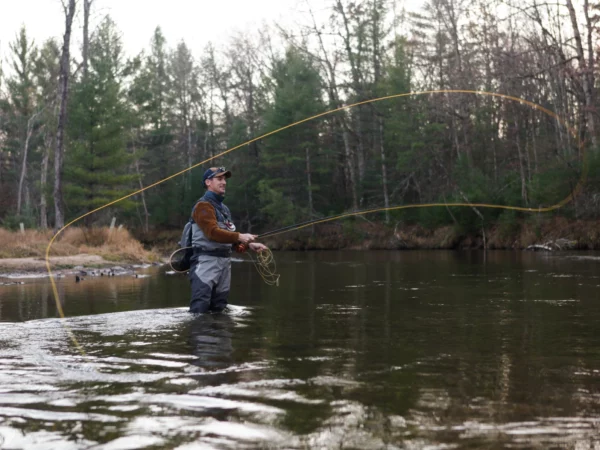
By Steve Schulwitz, The Alpena News
This article is part of a collaboration between The Alpena News and Great Lakes Now at Detroit Public Television to bring audiences stories about the Great Lakes, especially Lake Huron and its watershed.
ALPENA – Aquatic invasive species continue to spread and threaten the ecosystem in the waterways near Alpena, local environmental professionals say.
Despite mitigation efforts, invasive species such as European frog-bit, narrow-leaf cattail, and zebra mussels continue to spread from location to location while disrupting the wildlife near their spread.
Limiting the spread of invasive species can be very difficult, Northeast Michigan officials say, because, often, more than one invasive species intermingles with one another but need to be attended to differently.
Steve Woods, conservation stewardship director at Huron Pines, a Northeast Michigan environmental group, said that, currently, the conservation group is targeting and trying to address several water-based invasive species.
Topping the list is European frog-bit, which is spreading quickly around Duck Park and Island Park in Alpena. Woods said the small plants resemble small lily pads but grow thick, with long, mesh-like roots that complicate the environment under the surface and threaten the wellbeing of fish, waterfowl, and other aquatic plant life.

Volunteer Ethan Weinkauf loads a rowboat with narrow-leaf Cattail, an invasive species that negatively impacts the aquatic ecosystem, in this undated photo provided by Huron Pines via The Alpena News
“It is relatively new to the Great Lakes ecosystem, and we are fighting to put the genie back in the bottle, because the Thunder Bay watershed is a hotspot and created some real problems,” Woods said. “The Thunder Bay River is carrying what are effectively seeds to other water bodies, and, now, we are finding it in wetlands and marshes along the Thunder Bay shoreline.”
He said the frog-bit also impacts recreational activities like kayaking and paddleboarding because of the water conditions the plant produces on the surface.
Woods said that, because the European frog-bit is relatively new in the region, there is still a chance it can be eradicated. He said the environmental damage the plant can cause if it widely spreads is the main reason there is an all-hands-on-deck approach being taken to fight it.
“I don’t think we are at the point where we can eradicate it, but we won’t know until we try,” he said. “It could have a severe impact on the Great Lakes, so we have to try.”
Narrow-leaf cattail is an invasive aquatic species that looks similar to broadleaf cattail, which is native to the area.
Logan Hawley, coastal restoration team leader for Huron Pines, said the tall plants impact the environment in and near lakes and ponds, similar to the frog-bit. He said the invasive cattail can become very thick and disrupts the natural habitat of birds, frogs, and turtles.
“It takes over entire areas along water bodies in this region and takes away from the habitat we look for for our waterfowl and amphibians, because they thrive on a diverse plant community,” Hawley said. “So, having a highly competitive cattail along the margins of waterways really takes away from those benefits.”
Hawley said the invasive cattails also create an environment that bolsters the growth and spread of European frog-bit, which creates challenges in trying to limit the spread of both invasive species.
“It cements the frog-bit lily pads to the substrate of the water and gives it areas to colonize,” he said. “It provides a type of refuge between the plants.”
At Duck Park in Alpena, there are both narrow-leaf cattail and European frog-bit co-mingling. Hawley said that makes removal, treatment, and eradication difficult.
“There is one management for the cattails that is effective that isn’t effective for the frog-bit, so, a lot of the time, you have to take these types of managements in stages,” Hawley said.
In addition to those new invasives, a longtime invasive species in Northeast Michigan continues to wreak havoc in local bodies of waters. Woods aid zebra mussels continue to cover the floor of lakes and rivers, impacting infrastructure and historical markers in Lake Huron.
“The zebra mussels can really degrade the artifacts and shipwrecks,” Woods said. “That not only impacts the ecosystem, but it also has the potential to impact the local economy.”
The shipwrecks draw tourists and researchers by the hundreds to Northeast Michigan every year.
Chris Engle, communications associate for Huron Pines, said the best way to prevent the spread of invasive species and limit the impacts them is to educate the public and teach them how to identify the plants and animals, as well as how to make sure they don’t inadvertently transport remnants of the invasive species to another body of water.
Engle said people who use boats, kayaks, canoes, fishing poles, and tackle need to properly wipe down and wash their watercrafts and equipment. He said it only takes a few fragments of Narrow-leaf cattail or European frog-bit to spark an unintended spread in a body of water.
“Things like draining your boat at the site you’re leaving, drying it, letting it sit in the sun for a few days will help to not take it from one water body that has it to one that doesn’t,” Engle said. “That is really the only way we are going to keep it contained to the point we can control it.”
Catch more news at Great Lakes Now:
JEWEL OF THE GREAT LAKES: Keeping pollutants out
Rising water makes Lake Michigan wetlands vulnerable to invaders
Featured image: Chris Engle, communications associate for Huron Pines, left, and Logan Hawley, coastal restoration team leader for Huron Pines, look out over the water while visiting Duck Park in Alpena recently. (Photo Credit: Steve Schulwitz/The Alpena News)




